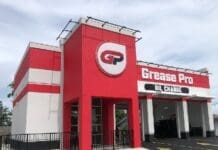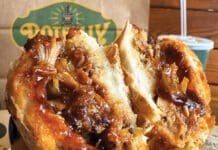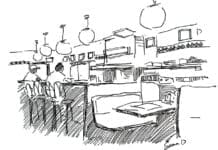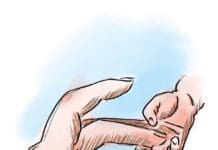By Alan Watson, President, GOLF+ Panama City Beach
I’ve noticed recently two different kinds of golfers who come into my shop for club fittings. Those who believe the numbers and want to understand the data, and those who feel more driven and sometimes question the numbers and the data. While golf is a game of feel, confidence, and athletic ability, we still have to rely on data/numbers to understand the game and how we play it. For example, we can’t just walk up to the tee of a par 3 with any random club and hit the ball. Without knowing the distance to the front of the green and the pin, we are risking hitting it too short or too long. Without knowing how far each of our clubs carries, we have no idea which club to select on any given shot.
One of the more recent trends in fitting is to look at something called “closure rate.” This metric is how fast the club face closes through impact with the golf ball. Someone like professional golfer Sergio Garcia, who has a ton of lag in his swing, has a slow closure rate because the face barely moves until impact. Many recreational golfers close the clubface early at the top of the transition. We call this “casting.” Some golfers wait to close the face until the bottom of the swing and then flip the wrists, causing the face to rotate rather quickly at the bottom of the swing, usually resulting in disaster.
This data point of closure rate allows us as club fitters to see what type of shaft will help make better contact and better overall shots. Recently, I had a golfer in the fitting bay who had very heavy stiff shafts in his irons. His closure rate was in the middle of the spectrum, and as a result of his swing path and his face closure, he was hitting hooks. Once we switched to a slightly lighter shaft with a softer tip section, the face didn’t hold so tight through impact and he was able to hit it higher and straighter. The reason for the change was simply that the stiffer-tipped shaft was moving with his movement, while the softer-tipped shaft was lagging behind, keeping the face more open. He had no trouble closing the face on his own, so by having a shaft that didn’t fight his tendency, he was going to keep hitting the same left-turning shot over and over. Understanding closure rate and how it affects the swing and the ball allows us to make better recommendations to each golfer.
Slow closure rates would mean that the golfer isn’t rotating much through impact. In these cases, regardless of swing speed, we would suggest a stiffer tip section in the shaft to allow the shaft to move through the swing with precision, meaning that the shaft will be where the golfer needs it to be, not moving too far ahead or behind. We see this with slower swing speed golfers sometimes, but more often it’s with slicers of the ball who don’t close the club face enough. The open club face causes the ball to move right. By offering a stiffer tip shaft to this golfer, we can keep the shaft from bending at the wrong part of the swing, making things worse.
While all this data really helps us as fitters, it can often be confusing to the average golfer who may not have a deep understanding of golf shaft technology. Sometimes, all the numbers we use with our launch monitor can feel like hocus pocus to them. I assure you it is anything but. Understanding the angle of attack, closure rate, spin rate, descent angle, and launch angle are the best ways for us to fit you into the right clubs. You can trust that the data is moving your game in the right direction.
If you want to learn more or get a custom club fitting with us, feel free to reach out. (850) 249-2726 or golfpluspcb@gmail.com.





















































